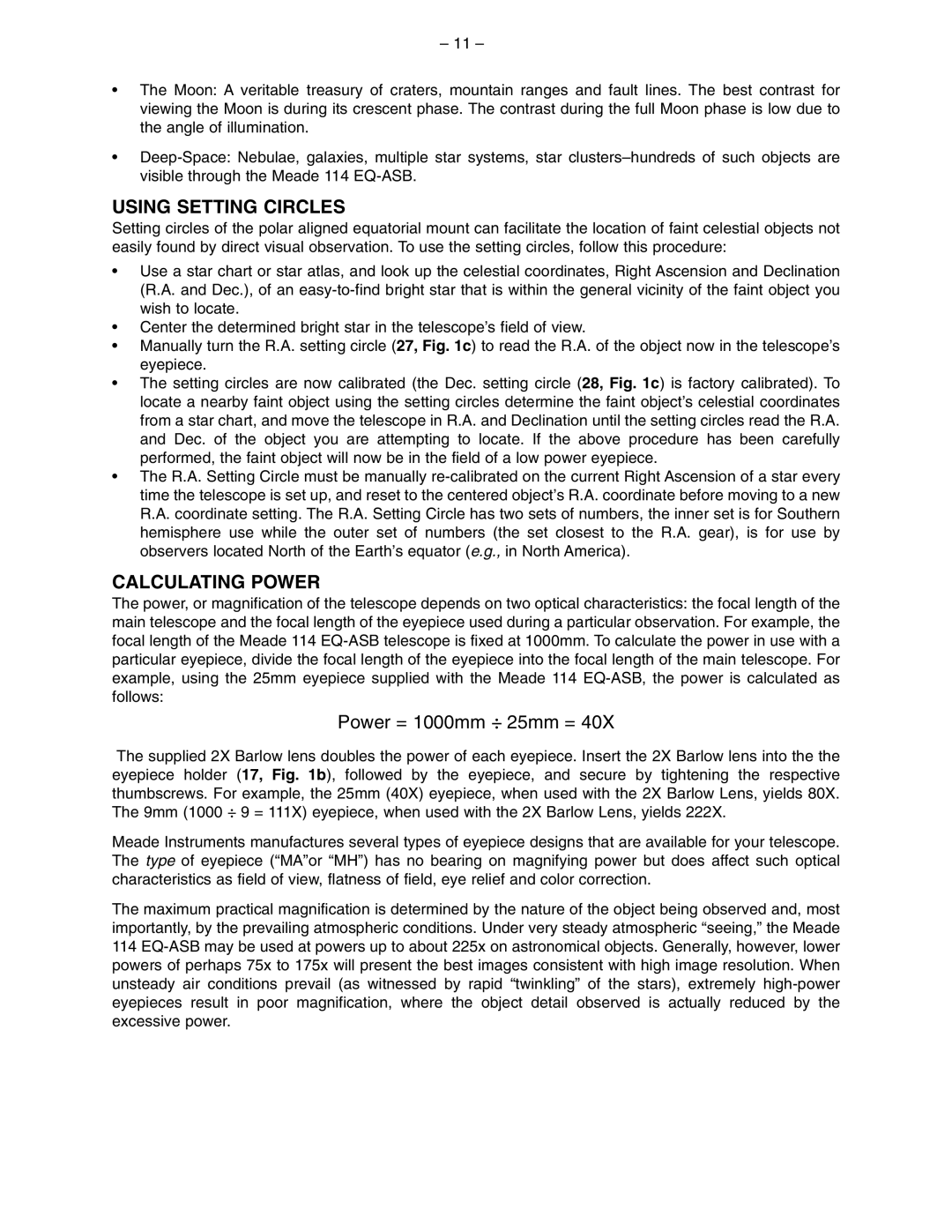– 11 –
•The Moon: A veritable treasury of craters, mountain ranges and fault lines. The best contrast for viewing the Moon is during its crescent phase. The contrast during the full Moon phase is low due to the angle of illumination.
•
USING SETTING CIRCLES
Setting circles of the polar aligned equatorial mount can facilitate the location of faint celestial objects not easily found by direct visual observation. To use the setting circles, follow this procedure:
•Use a star chart or star atlas, and look up the celestial coordinates, Right Ascension and Declination (R.A. and Dec.), of an
•Center the determined bright star in the telescope’s field of view.
•Manually turn the R.A. setting circle (27, Fig. 1c) to read the R.A. of the object now in the telescope’s eyepiece.
•The setting circles are now calibrated (the Dec. setting circle (28, Fig. 1c) is factory calibrated). To locate a nearby faint object using the setting circles determine the faint object’s celestial coordinates from a star chart, and move the telescope in R.A. and Declination until the setting circles read the R.A. and Dec. of the object you are attempting to locate. If the above procedure has been carefully performed, the faint object will now be in the field of a low power eyepiece.
•The R.A. Setting Circle must be manually
CALCULATING POWER
The power, or magnification of the telescope depends on two optical characteristics: the focal length of the main telescope and the focal length of the eyepiece used during a particular observation. For example, the focal length of the Meade 114
Power = 1000mm ÷ 25mm = 40X
The supplied 2X Barlow lens doubles the power of each eyepiece. Insert the 2X Barlow lens into the the eyepiece holder (17, Fig. 1b), followed by the eyepiece, and secure by tightening the respective thumbscrews. For example, the 25mm (40X) eyepiece, when used with the 2X Barlow Lens, yields 80X. The 9mm (1000 ÷ 9 = 111X) eyepiece, when used with the 2X Barlow Lens, yields 222X.
Meade Instruments manufactures several types of eyepiece designs that are available for your telescope. The type of eyepiece (“MA”or “MH”) has no bearing on magnifying power but does affect such optical characteristics as field of view, flatness of field, eye relief and color correction.
The maximum practical magnification is determined by the nature of the object being observed and, most importantly, by the prevailing atmospheric conditions. Under very steady atmospheric “seeing,” the Meade 114
